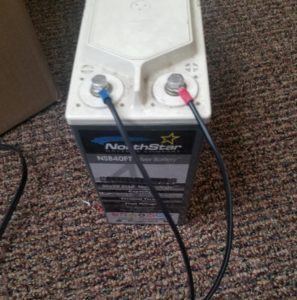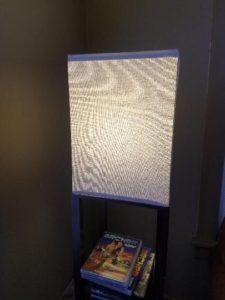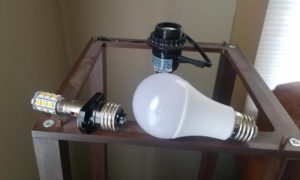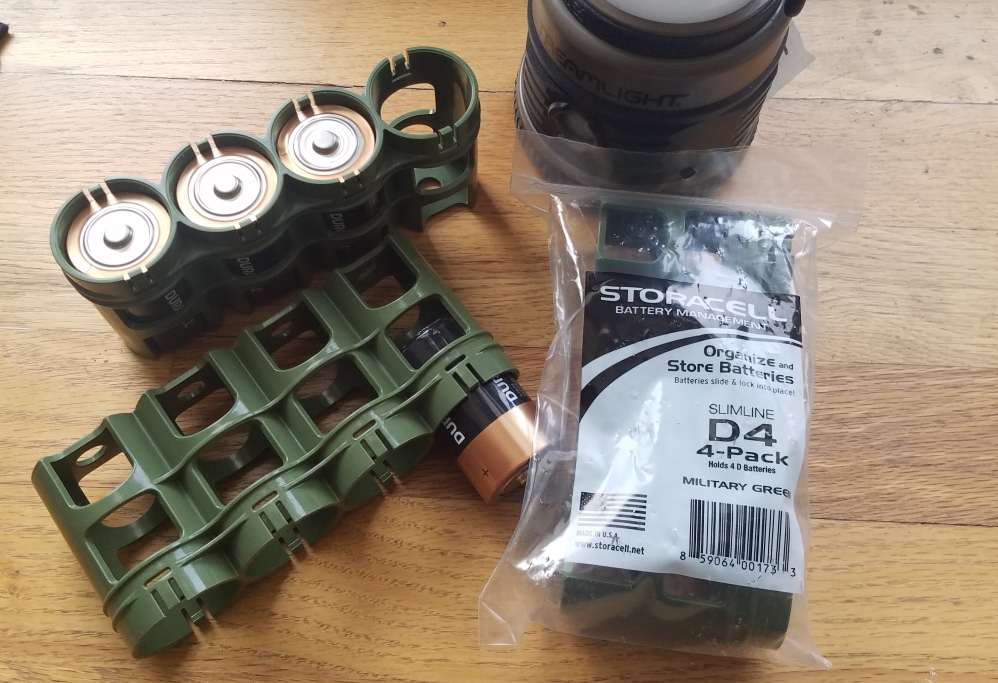About three years ago, I picked up some AGM batteries off Craigslist. My original intent was that I wanted to rewire a common house lamp to use 12v LED lighting. The idea being, naturally, that in a power outage I would have a ‘normal’-looking source of light, rather than the stark and brutal harsh lighting that we get from just standing a battery lantern on top of the refrigerator or something.
So, my initial forray was…meh. I wound up buying an adapter to let me use a bayonet-type socket in place of a normal screw-in bulb socket...basically following these directions. But, in that case, it turned out there was a much easier way to do things – simply buy an LED desk lamp and remove the ‘wall wart’ AC-to-DC inverter and simply run it straight off 12v. Which I did…and it worked awesomely.
And that’s fine. My own testing showed that off of a battery jump pack the lamp would run non-stop for over a week. But try lighting an entire room with a desk lamp…it’s not really up to the task. So, I had a cheapo ‘dorm quality’ lamp sitting in the corner that I decided to experiment on.
First thing was to cut off the existing plug, determine where + and – were (you have a 50/50 shot of getting it right on the first try), and attaching some method of connecting to the battery. Bare wires work, but if you can make things neater, why not?
 Next step was the bulb. Here you can see the previous bulb, and the bayonet adapter, that I had used. It worked, yes…but it didn’t put out enough light to seem like the lamp was ‘normal’ in its output. The other bulb is a Made-in-China (just like Covid!) bulb ‘designed’ for low voltage 12v systems. A somewhat more elegant solution than a bayonet adaptor and odd-attachment bulbs. All this required is a) bulb and b) changing the plug on the wire.
Next step was the bulb. Here you can see the previous bulb, and the bayonet adapter, that I had used. It worked, yes…but it didn’t put out enough light to seem like the lamp was ‘normal’ in its output. The other bulb is a Made-in-China (just like Covid!) bulb ‘designed’ for low voltage 12v systems. A somewhat more elegant solution than a bayonet adaptor and odd-attachment bulbs. All this required is a) bulb and b) changing the plug on the wire.
 (Yes, I have Archer on DVD. Do you not?)
(Yes, I have Archer on DVD. Do you not?)






